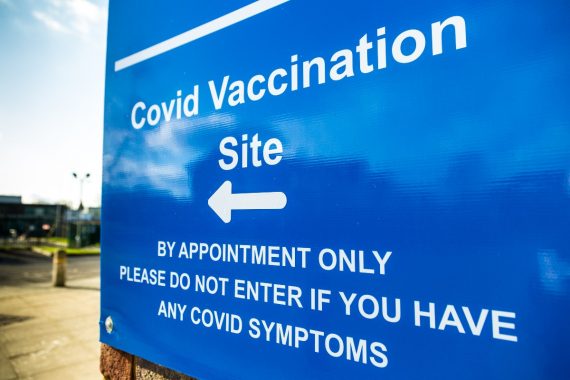Phase two of the Covid vaccination programme will not prioritise key workers but continue in age order, starting with those aged 40-49.
This follows advice by the Joint Committee on Vaccination and Immunisation (JCVI), published today, which the UK Government said would be adopted by all four nations.
Last month, NHS England’s chief executive suggested key workers could be made a vaccine priority cohort.
But today Public Health England (PHE) announced that evidence suggests an ‘age-based approach remains the most effective way of reducing death and hospitalisation from Covid-19’ as risk reduces with age.
Once all cohorts in phase one have been offered ‘at least’ their first jab, JCVI interim advice is for those aged 40-49 to be prioritised, following by those aged 30-39 and then those aged 18-29, it said.
Modelling has indicated that the ‘speed of vaccine deployment is the most important factor in maximising public health benefits against severe outcomes’, PHE added.
A statement said: ‘The committee agreed that mass vaccination targeting occupational groups would be more complex to deliver and may slow down the vaccine programme, leaving some more vulnerable people at higher risk unvaccinated for longer.
‘Operationally, simple and easy-to-deliver programmes are critical for rapid deployment and high vaccine uptake.’
It added that the JCVI ‘strongly advises that priority is given to promoting vaccine uptake’ in groups at higher risk of hospitalisation such as men, those from BAME backgrounds, those with a BMI over 30 and those living in deprived areas.
A UK Government spokesperson said: ‘All four parts of the UK will follow the recommended approach, subject to the final advice given by the independent expert committee.
‘The UK Government remains on course to meet its target to offer a vaccine to all those in the phase one priority groups by mid-April, and all adults by the end of July.’
The Government added that 18.7 million people have now received at least one Covid vaccine dose across the UK.
JCVI Covid-19 chair Professor Wei Shen Lim said: ‘The current strategy is to prioritise those who are more likely to have severe outcomes and die from Covid-19. The evidence is clear that the risk of hospitalisation and death increases with age.
‘The vaccination programme is a huge success and continuing the age-based rollout will provide the greatest benefit in the shortest time, including to those in occupations at a higher risk of exposure.’
PHE head of immunisations Dr Mary Ramsay added: ‘The age-based approach will ensure more people are protected more quickly.
‘It is crucial that those at higher risk – including men and BAME communities – are encouraged to take the vaccine, and that local health systems are fully engaged and reaching out to underserved communities to ensure they can access the vaccine.’
The JCVI was asked by the Department of Health and Social Care (DHSC) to advise on the ‘optimal strategy’ to reduce mortality, morbidity and hospitalisation from Covid, PHE said.
It comes as the Government this week announced a new target for all adults in England to have been offered a first jab by the end of July – with priority cohorts one to nine to have been covered by the end of April.
Meanwhile, an NHS England team is working to boost Covid vaccine uptake among minority groups by targeting staff from BAME backgrounds – while one GP is ‘personally calling’ every vulnerable patient who has yet to take up a jab.
Pulse October survey
Take our July 2025 survey to potentially win £1.000 worth of tokens













If I was a teacher I’d be very unhappy. Lots of medical staff had who aren’t front line in the slightest. They are the only role expected to be in close proximity to multiple individuals for prolonged contact without ANY PPE. They could all be done in a couple of days
I can assure you teachers ARE wearing PPE in my daugter’s primary school in Wales – both mask and visor. This is a lot more than supermarket workers who have a proven higher risk of catching COVID.
Well, at least this will reduce the huge amount of time and energy wasted on arguing over who precisely should be in which group, unlike the bureaucratic car crash that was Categories 4 and 6.
The last I read the studies in to occupational risk did not take in to account any other factors- ethnicity, deprivation, whether social distancing was being followed at other times etc so aren’t reliable. I do feel for other keyworkers who’ve not had the luxury of being furloughed or working from home but I do think teachers are being put in a uniquely vulnerable position. Re PPE It still isn’t being recommended on gov.uk so most teachers not allowed or encouraged to wear. And if kids aren’t wearing as well is it as helpful? DOI married to a teacher so maybe I’m just biased/brainwashed